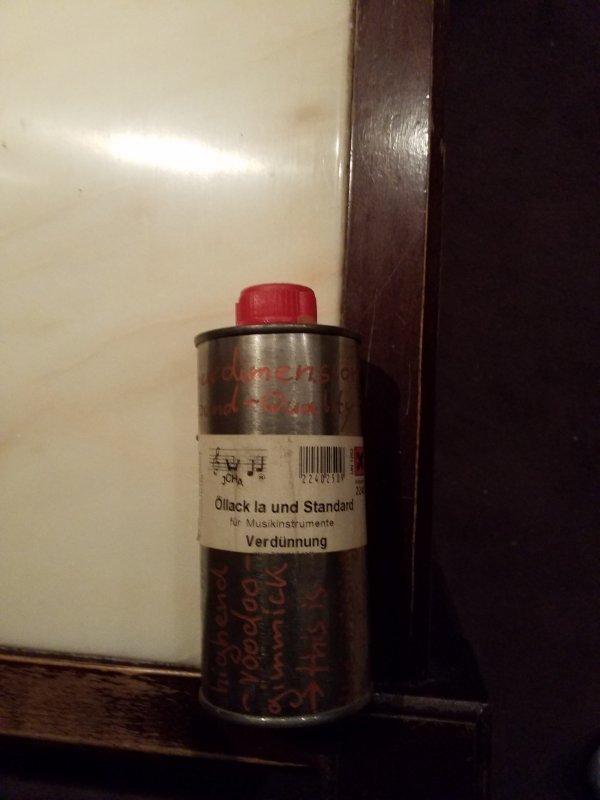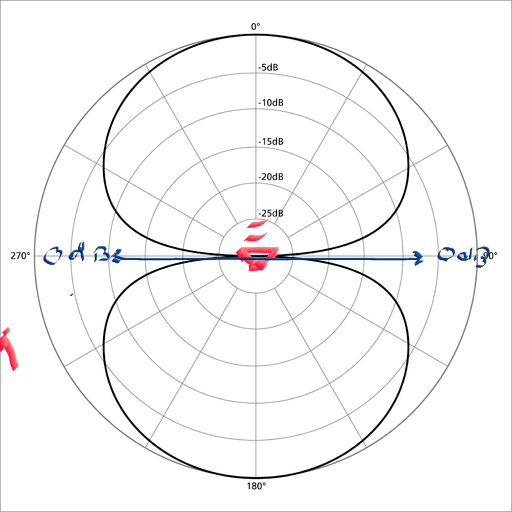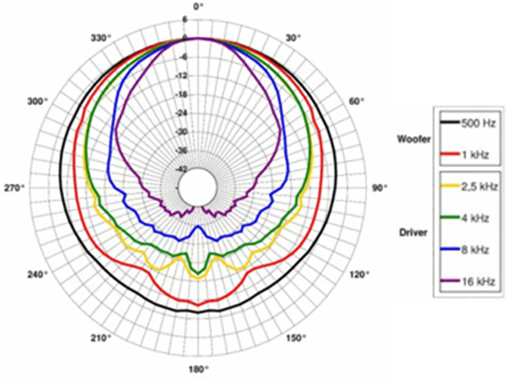Thanks! I'll look into this.Thanks for the interesting article.
Slightly off topic, but in reference to those first stereophonic experiments mentioned in the article, there is a Duke Ellington recording from Feb. 3, 1932, that was made with two microphones on two separate discs and that can now be heard in stereo:

Duke Ellington: Stereo Reflections In Ellington : Duke Ellington : Free Download, Borrow, and Streaming : Internet Archive
Tracklist: 1. Mood Indigo (Stereo) 2. Hot & Bothered (Stereo) 3. Creole Love Call (Stereo) 4. East St Louis Toodle-Oo (Stereo) 5. Lots O' Fingers...archive.org
The sound quality is impressive.
That three song medley recorded on February 3rd (first three tracks of the CD) was issued on the first LPs: http://jimbutterworth.co.uk/4rcagram.htm
Modern speakers vs Vintage speakers
- Thread starter thomask
- Start date
You are using an out of date browser. It may not display this or other websites correctly.
You should upgrade or use an alternative browser.
You should upgrade or use an alternative browser.
It is an interesting question. What about the full-range AER drivers. Surely they must be precise?
I don't have an answer to that question. I'm not sure "precision" is the word I should have chosen, but as mentioned, it is difficult to define. The best thing to do is try and listen to some of these speakers to understand why people appreciate them.
The de-whizzered Lowther driver in my Horning is a vintage design. The paper cone has a very thin coating of lacquer or something…my Supravox drivers have nothing on them. Uncoated paper works fine and is stable for decades, although might change sound a bit depending on humidity. The Lowther has incredible snap as it is a very light cone with an enormous 2.4T Alnico magnet. 98dB from a 5 inch driver and no horn is no joke.It is an interesting question. What about the full-range AER drivers? Surely they must be precise?
I understand about the light weight and thus speed of vintage cone driver paper. (This is why some designers, such as Peter Noerbaek, use vintage 15 inch woofers in their new loudspeakers). But I don't understand why this paper doesn't dry out over time?
The SPL comes from the acceleration of the driver and it’s area…how rapidly it changes speed and direction…drivers approaching or surpassing 100dB without a horn either have best acceleration or have good acceleration and large area (like a big paper woofer).
In the past, terpenes (natural resins) were often used. Nowadays, many people rely on vinyl coating on the paper. If someone comes up with the idea of recoating their drivers, they need to make sure that there is no water in it.It is an interesting question. What about the full-range AER drivers? Surely they must be precise?
I understand about the light weight and thus speed of vintage cone driver paper. (This is why some designers, such as Peter Noerbaek, use vintage 15 inch woofers in their new loudspeakers). But I don't understand why this paper doesn't dry out over time?
Paper is water soluble. But the main reason is not durability but rather the prevention of partial vibration of the membrane. nobody likes increased k2 thd.
P.S the vodoo c37 works too,its violin making varnish.

Last edited:
The de-whizzered Lowther driver in my Horning is a vintage design. The paper cone has a very thin coating of lacquer or something…my Supravox drivers have nothing on them. Uncoated paper works fine and is stable for decades, although might change sound a bit depending on humidity. The Lowther has incredible snap as it is a very light cone with an enormous 2.4T Alnico magnet. 98dB from a 5 inch driver and no horn is no joke.
The SPL comes from the acceleration of the driver and it’s area…how rapidly it changes speed and direction…drivers approaching or surpassing 100dB without a horn either have best acceleration or have good acceleration and large area (like a big paper woofer).
Line arrays are a good solution, IMO - offering very large surface with minimal distortion of each driver. But then it is all about implementation, for example integrating sub-woofers and tweeters while having the mid-range drivers without crossovers. Scaena seems to have achieved good results (never heard them myself).
What is interesting to me is that the sound of that single 755C reminds me a lot of the sound I get from my open baffle (line array) speakers - some things the 755C does better. My open baffle speakers have their limitations, they are a "crude" implementation of the line array concept, and they need more space to breathe. I would be curious to DIY a different line array with some smaller drivers, like the ETON Symphony (I got a pair to play around with).
Last edited:
As you mentioned, line arrays give minimal distroriton and excellent soundstage.Line arrays are a good solution, IMO - offering very large surface with minimal distortion of each driver. But then it is all about implementation, for example integrating sub-woofers and tweeters while having the mid-range drivers without crossovers. Scaena seems to have achieved good results (never heard them myself).
What is interesting to me is that the sound of that single 755C reminds me a lot of the sound I get from my open baffle (line array) speakers - some things the 755C does better. My open baffle speakers have their limitations, they are a "crude" implementation of the line array concept, and they need more space to breathe. I would be curious to DIY a different line array with some smaller drivers, like the ETON Symphony (I got a pair to play around with).
I have good result with Scaena 3.2 augmented with pair of Rel 31 subwoofers.
But vintage speaker also give fast and exciting sounds with exquisite details.
Thus I am looking to add field coil speaker before I die.
All speakers with a narrow baffle produce this effect. If you close your eyes and listen to music, you can hardly locate them.
Scaena has rounded all the edges of the housing, which ensures a linear frequency response at the listening position. Very cleverly built. Sharp housing edges ensure jagged frequency response, lots of valleys and peaks in the frequency response.
But this speaker is not an open baffle, because each driver of the line array is in an enclosed housing.
Unfortunately, the good radiation from the dipole, which stimulates little room modes, is wasted.
Dipole radiation at the front like a lobe, and at the rear 180 degrees out of phase. Laterally on the speaker axis they generate 0dB sound pressure.
Normal loudspeaker with housing, you can see the advantage of the dipole. In the bass, no spherical waves radiate into the room (fewer room modes). But there is always the other side of the coin. To achieve very deep bass with a dipole (open baffle), you need large drivers, because the signals are in anti-phase and less room modes Sound pressure is removed. If you calculate it correctly you will get very precise bass that will give you a lot of pleasure.
Scaena has rounded all the edges of the housing, which ensures a linear frequency response at the listening position. Very cleverly built. Sharp housing edges ensure jagged frequency response, lots of valleys and peaks in the frequency response.
But this speaker is not an open baffle, because each driver of the line array is in an enclosed housing.
Unfortunately, the good radiation from the dipole, which stimulates little room modes, is wasted.
Dipole radiation at the front like a lobe, and at the rear 180 degrees out of phase. Laterally on the speaker axis they generate 0dB sound pressure.

Normal loudspeaker with housing, you can see the advantage of the dipole. In the bass, no spherical waves radiate into the room (fewer room modes). But there is always the other side of the coin. To achieve very deep bass with a dipole (open baffle), you need large drivers, because the signals are in anti-phase and less room modes Sound pressure is removed. If you calculate it correctly you will get very precise bass that will give you a lot of pleasure.

As you mentioned, line arrays give minimal distroriton and excellent soundstage.
I have good result with Scaena 3.2 augmented with pair of Rel 31 subwoofers.
But vintage speaker also give fast and exciting sounds with exquisite details.
Thus I am looking to add field coil speaker before I die.
Thanks for this reality check!
Yes, I think it was around 2011. At CES there was a big system and the 757a’s were in a smaller room. I was very impressed with the large room and then Thomas Schroeder said to me: “you haven’t heard the real gem at CES,” And brought me into a smaller room with the 757a.That's probably the same system I heard at the 2011 RMAF. For a year or two they were taking the 757a/Silbatone system around the show circuit. Like you, I still have a permanent memory of the sound of the 757a.
I visited one of die hard vintage audiophile living in Korea yesterday.
He is 70 years old electric engineer who had collected more than 100 vintage gears but sold some of them as hobby.
His listening room on top of his factory building is large, 35ft w 60 ft deep 15ft high.
WE 16A horn 555W driver
Jensen PLJ PLM 18 double woofer
Tad 2001 tweeter.
Power amp is Westrex a11
Pre amp was built by him.
The source is vinyl with some strange ticking noise.
I will upload more videos from other speaekrs in the room.
Last edited:
Eva Cassidy sounds natural and gracious with the same system above.
If you have large listening room, this system could be your end game system.
Last edited:
KCC Western Electric Audio Museum in memory of late Mr Chung Sangyoung will open May 30, 2024 at Seoul, Korea.
I will attend the opening ceremony.
Last edited:
yep C37 , or just some resin in natural turpentine will do wonders....also on large bafflesIn the past, terpenes (natural resins) were often used. Nowadays, many people rely on vinyl coating on the paper. If someone comes up with the idea of recoating their drivers, they need to make sure that there is no water in it.
Paper is water soluble. But the main reason is not durability but rather the prevention of partial vibration of the membrane. nobody likes increased k2 thd.
P.S the vodoo c37 works too,its violin making varnish.View attachment 120512
KCC Western Electric Audio Museum in memory of late Mr Chung Sangyoung will open May 30, 2024 at Seoul, Korea.
I will attend the opening ceremony.
What a great initiative! Will they have demos of some of the speakers?
These old systems are so rare, and so special, many audiophiles would benefit from the opportunity to listen to them to understand what they do and what is missing from modern day speakers.
Found this video, that some of you will know already, of a demo of an original Western Electric 757A:
How many people have heard these? Probably only a handful...
I was there in 2011 and I still have vivid memories of the sound of those 757a speakers. The best sounding room at the show.Found this video, that some of you will know already, of a demo of an original Western Electric 757A:
How many people have heard these? Probably only a handful...
Sorry but this is not good. Her voice is not transparent with a strong “cupped hands “ effect and sounds rather metallic.
Eva Cassidy sounds natural and gracious with the same system above.
If you have large listening room, this system could be your end game system.
This is the exact system I heard in the exact room. It was at CES.What a great initiative! Will they have demos of some of the speakers?
These old systems are so rare, and so special, many audiophiles would benefit from the opportunity to listen to them to understand what they do and what is missing from modern day speakers.
Found this video, that some of you will know already, of a demo of an original Western Electric 757A:
How many people have heard these? Probably only a handful...
Sorry but this is not good. Her voice is not transparent with a strong “cupped hands “ effect and sounds rather metallic.
Yes due to horn effect from his speaker, there is some "cupping hands", but I still enjoyed its sound.
Maybe I may like her voice in my system better.
Here's a 1947 article which is interesting to read: "What Makes a Good Loudspeaker?"
Similar threads
- Replies
- 272
- Views
- 43K
- Replies
- 256
- Views
- 46K
- Replies
- 483
- Views
- 60K
- Replies
- 44
- Views
- 11K
- Replies
- 400
- Views
- 149K
| Steve Williams Site Founder | Site Owner | Administrator | Ron Resnick Site Owner | Administrator | Julian (The Fixer) Website Build | Marketing Managersing |






